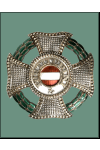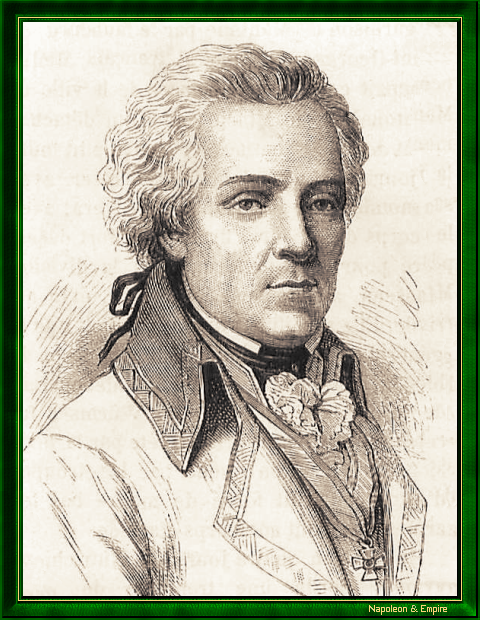Josef Alvinczy von Borberek
Baron

Josef Alvinczy von Borberek was born on February 1, 1735, in Alvincz, Transylvania [now in Romania], into an old Hungarian noble family.
He joined the army at the age of fifteen as an officer cadet in a hussar regiment, where he quickly rose through the ranks. A captain at the beginning of the Seven Years' War, he distinguished himself at the battle of Torgau (November 3, 1760), the capture of Schweidnitz (October 1, 1761), and the battle of Teplitz (August 2, 1762). A promotion to the rank of second major (equivalent to major) was awarded in 1763 in recognition of these feats of arms.
Once the war was over and the wounds he received at Torgau and Teplitz had fully healed, he participated in the implementation of Field Marshal Franz Moritz von Lacy's reforms (new military code, new recruitment system, improved supply procedures).
A lieutenant colonel in 1771 and a colonel in 1773, he took command of an infantry regiment in 1774. He led this regiment in the brief War of the Bavarian Succession (July 1778 – May 1779), during which he captured the town of Habelschwerdt (present-day Bystrzyca Kłodzka in Poland) and the Prussian general and prince Adolf of Hesse-Philippsthal-Barchfeld. These new exploits earned him the rank of major general (January 30, 1779) and the Order of Maria Theresa, the highest distinction that could be awarded to an Austrian soldier.
Alvinczy distinguished himself again, under the command of Ernst Gideon von Laudon, during the Russo-Turkish War of 1787–1793, which pitted the Russian Empire and Austria against the Ottoman Empire. In May 1789, he was promoted to lieutenant field marshal. After a failed attempt to capture Belgrade (October 8, 1789) — a failure attributable to bad weather — he was urgently sent to Belgium to combat the anti-Austrian uprising that had just broken out there. A fall from his horse quickly forced him to leave this theater of operations.
When the War of the First Coalition broke out, he was given command of a division. In 1792, he served under Karl Joseph Clerfayt de Croix. The following year, Alvinczy captured the town of Neerwinden at the battle of Neerwinden (March 18, 1793). This success was recognized with the Cross of Commander of the Military Order of Maria Theresa.
During the first months of 1794, he commanded the reserve of the Austrian main army. On April 26, he led a decisive victory at Maroilles-Prisches against a French army sent to relieve the town of Landrecies, which was under siege by the Allies. This new success led to his promotion two months later to the rank of Feldzeugmeister, the highest rank below that of Feldmarshall.
Meanwhile, he was appointed "Adlatus" (advisor) to Prince William Frederick of Orange (Willem Frederik van Oranje-Nassau), commander of the Austro-Dutch army corps operating on the Sambre. Together, they defeated the French at Charleroi-Gosselies (June 3, 1794) and Lambusart (June 16). This time, he received the Grand Cross of Maria Theresa.
In 1795, he took command of the Army of the Upper Rhine, located between Lake Constance and the Neckar River. However, Vienna recalled him before the campaign began to install him on the Court War Council (Hofkriegsrat), which served as the Ministry of War.
When the defeats of Johann von Beaulieu and then Dagobert Sigismund von Wurmser in Italy necessitated another change of commander-in-chief, Alvinczy was tasked with leading the new offensive to relieve Mantua. His first attack, in November 1796, was broken at Arcole. The second, in January 1797, failed at Rivoli and then at La Favorita. He was forced to retreat.
Alvinczy was relieved of his command the following March, but his government, showing little resentment, appointed him three months later commander-in-chief in Hungary, one of the highest Austrian military posts, and then promoted him to the rank of Field Marshal on September 7, 1808. Alvinczy held this position until his death from a stroke on November 25, 1810, in Buda (or Ofen, in the German terminology of the time).
According to his last wishes, Alvinczy was buried in a military cemetery, among his men, in Budapest.
"Josef Alvinczy von Borberek". Drawing by H. Rousseau. Engraving by E. Mons. Centenary Album.
